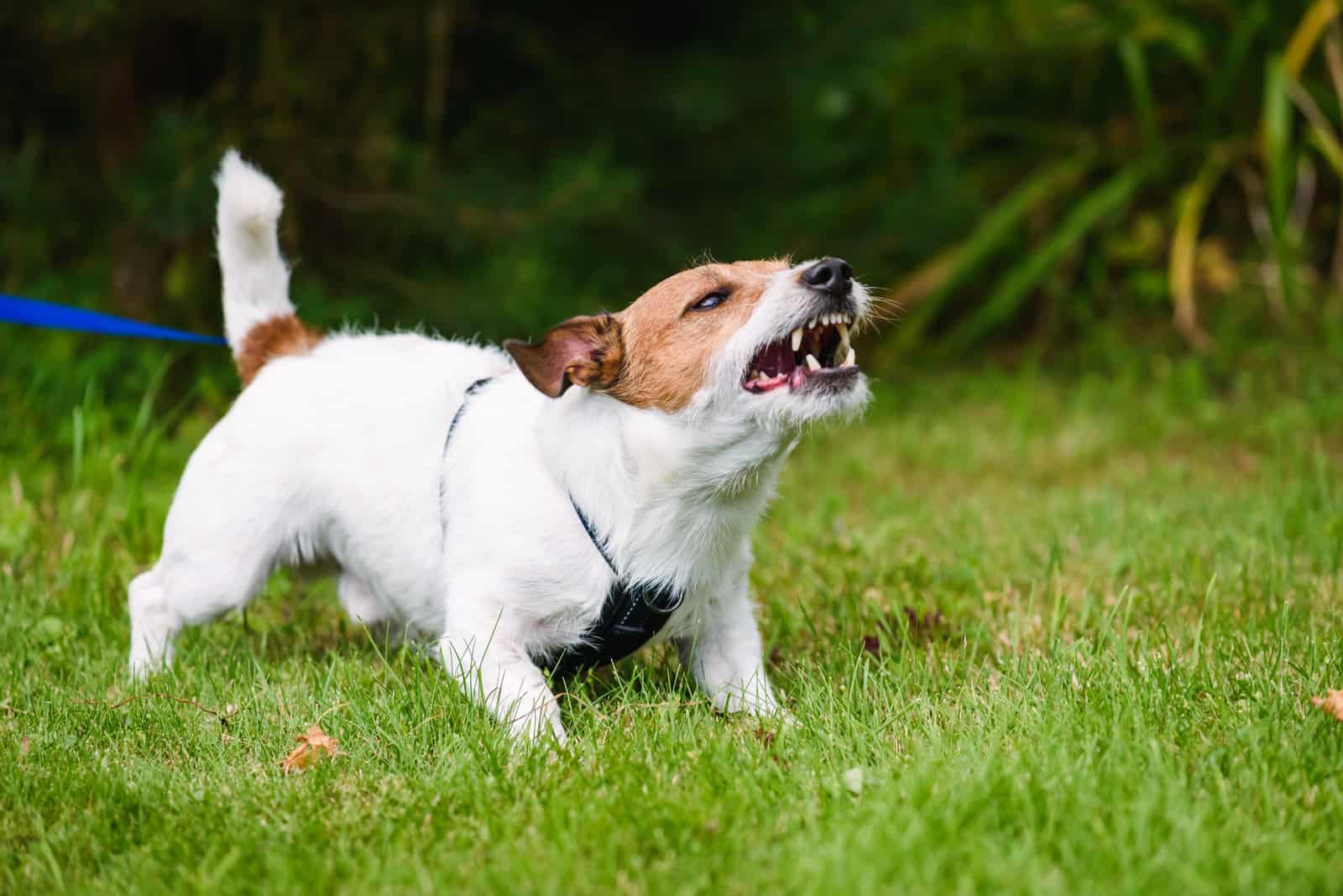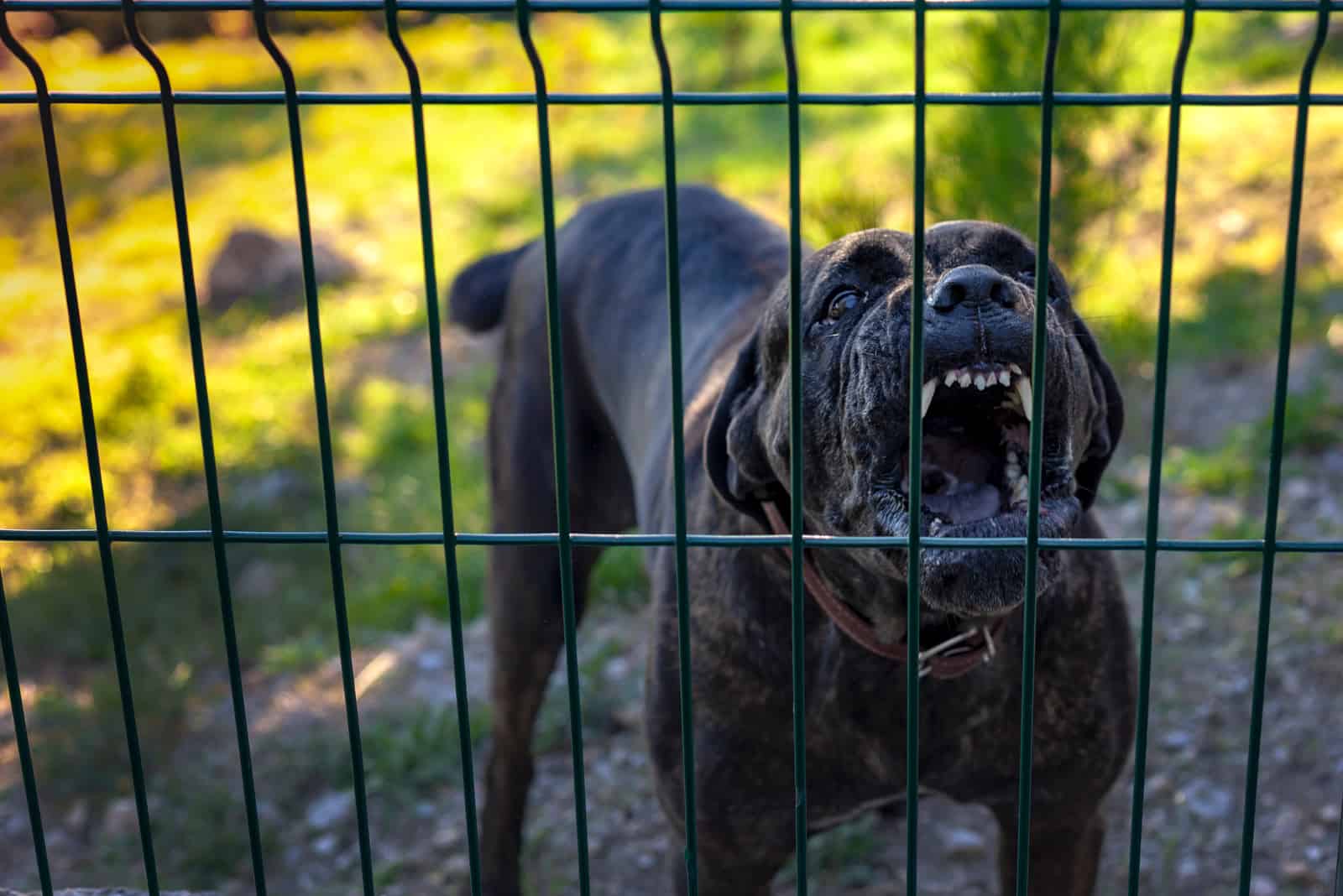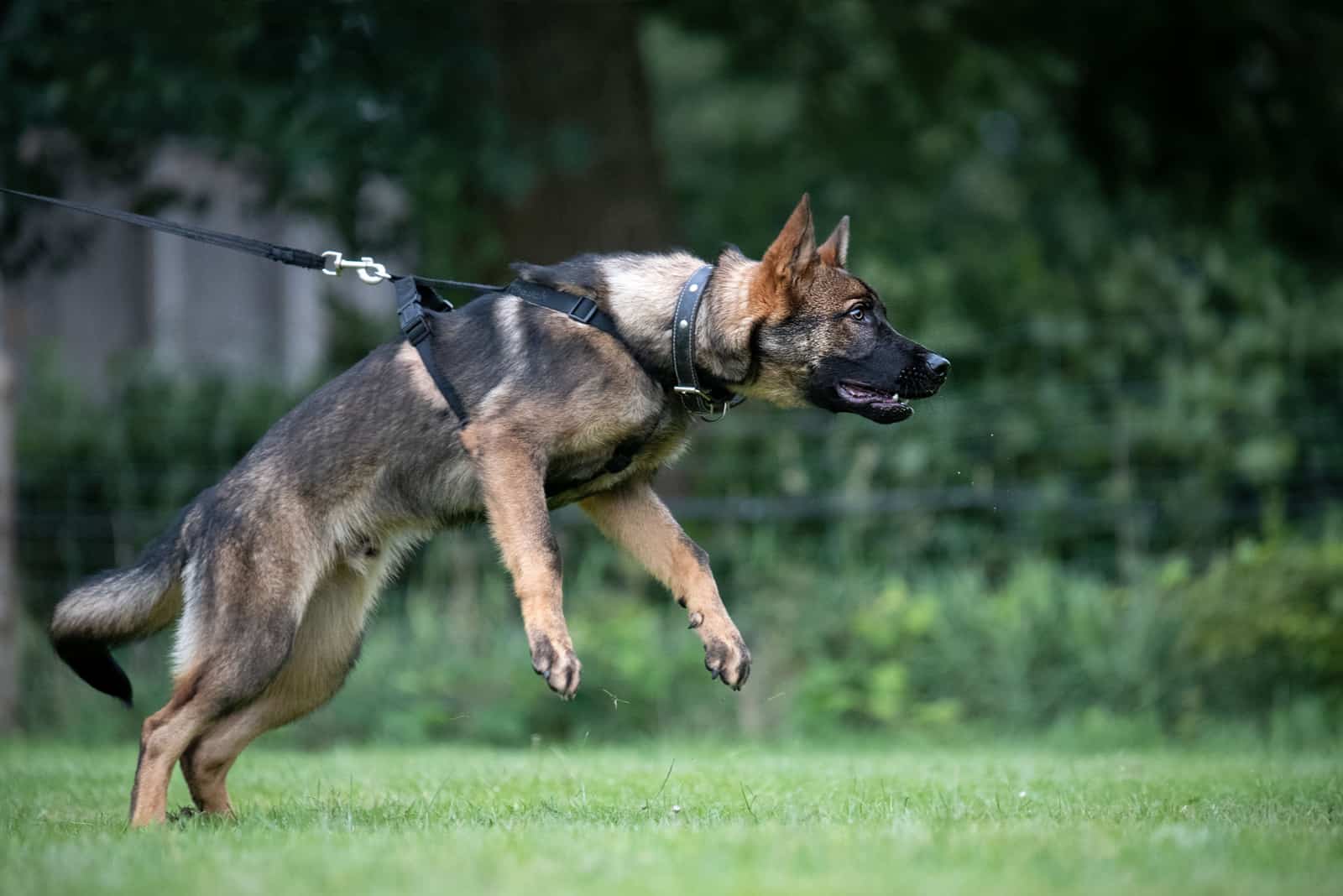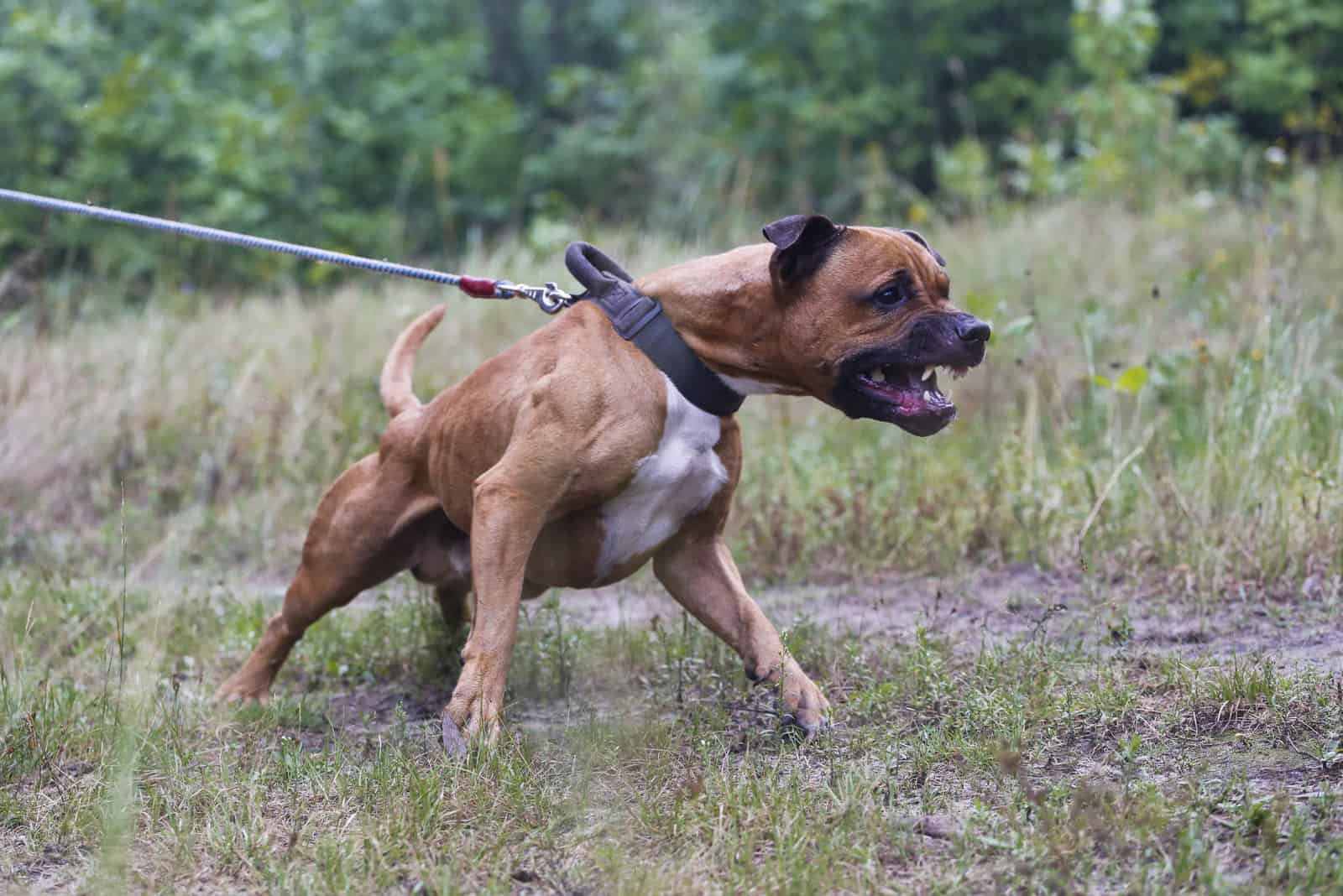Life with an aggressive dog can be actual hell sometimes; however, it is never easy to make a choice to give up your pup. In some cases, though, that is the only right decision for both you and your dog.
At the same time, with the decision of surrendering your dog comes the even more important question, “Where to surrender an aggressive dog?”
Aggressive dogs most likely will not be suitable for normal rehoming, especially if they have a pretty bad case of aggression or a bite history.
All of this makes finding a new home for them really difficult. Nonetheless, there are some possible solutions you can try.
Depending on your case, some of these solutions will be more suitable than others, but make sure to check them out because you never know what might work for your pup in the end.
Without further ado, let’s actually tackle this problem and explore the six safe solutions for surrendering an aggressive dog!
Where To Surrender An Aggressive Dog?

Before going further, let’s first see what surrendering actually means. Surrendering a dog is the act of relinquishing the ownership of the pet. You are no longer able to properly take care of the dog, and therefore, have decided to find a better place for him or her.
However, what happens to aggressive dogs? While it is easier to rehome dogs that don’t have any mental or health problems, those with behavioral issues represent a big problem for the whole community, so it is much more difficult to find a place that will actually take them.
So, where to surrender an aggressive dog? Keep reading to find out!
1. A board-certified Veterinary Behaviorist
Dog aggression is definitely one of the medical conditions that need proper medical assistance. It is difficult for normal dog owners to figure out what is actually causing this type of dog behavior, how to deal with it, and how to help your beloved pet.
One of the first things you can do is consult with a reputable veterinary behaviorist who will be able to find out what is causing this unwanted behavior.
They will advise you about possible behavior modification programs where you can register your dog, or medications that can help with this medical issue.
While this doesn’t actually mean completely surrendering your dog once and for all, it is definitely the first step you should take regarding this problem. Some of these programs might last for about six weeks or more.
Related: How To Socialize An Aggressive Dog: A Simple Guide For Dog Owners
Behavior Modification Programs
These programs are specifically made to treat undesirable dog behavior, and they can be adapted to the specific needs of each dog and his family. The dog’s behavior is modified under the strict guidance of certified veterinary behaviorists and dog trainers.
It is highly important to find a behaviorist and a trainer that is actually qualified and knows exactly how to deal with this kind of behavior problem. Nowadays, many people present themselves as experts while they don’t actually have any certificate or education behind them.
Make sure to check your sources and credentials since if your dog is not treated by the right people, your dog’s behavior can get even worse, and no one wants that, certainly.
You can check The American College of Veterinary Behaviorists (ACVB) for a directory of board-certified specialists (a.k.a. Diplomates) who are specifically trained to improve the behavioral health of animals.
2. Contact The Breeder

If the dog training, medication, or a behavior modification program doesn’t help with the dog’s aggressive behavior, and you are definitely set on surrendering your dog, the next possible solution could be contacting the breeder from whom you purchased the dog.
Usually, most reputable breeders have in their contracts that if you are unable to take care of the dog anymore, you can contact them and they will happily take the dog back.
If you have an adoption contract like this, don’t hesitate to contact the breeder since they may have more information about your dog’s history, or know some ways of how to effectively help him.
I am sure that they will definitely take him back, and if they are unable to keep him also, they will find him a new owner and a good home where he can be happy. This could be the best possible outcome for both you and your doggy.
3. A No-kill Shelter
Another option is to find a good, reputable animal shelter that is willing to take your aggressive dog. Even though most of the shelters don’t actually have the resources to deal with a dog’s aggressive behavior, there are some no-kill shelters that could accept your dog.
It is important to do your research and find a truly reputable and equipped shelter that is able to provide your dog with the care he needs. Sadly, many regular shelters are too full, and if the dog poses a threat to other dogs or has a bite history, he or she will be immediately put down.
This is why it is extremely important to find the right kind of shelter if you don’t want to see your dog put down. Sometimes, due to the high occupancy of shelters, you will need to expand your search to different cities or states if you want to find exactly what you are looking for.
While you can find many shelters that will accept your dog without any charge, most of them will actually require a certain surrender fee, so you should also be prepared for that. This surrender fee can be anywhere between $20 and $200 depending on the shelter and the state it is located in.
If you, however, are unable to pay that fee, but you are desperate to “get rid” of the dog, you can communicate your situation with the shelter, and perhaps they will be able to accept the dog even without the payment.
4. Non-profit Animal Rescue

If shelters do not give you a chance to surrender your dog to them, you can try with some nonprofit animal rescues or a rescue organization. These organizations are usually run by volunteers who make sure to help abused or homeless pets.
The Humane Society, as well as the American Society for the Prevention of Cruelty to Animals (ASPCA) are just some of these non-profit organizations that could help you. You can try contacting them or any other local rescue organization near you.
How Do Animal Rescue Organizations work?
Animal rescues usually don’t get any government funding, which means that they survive only through donations from animal lovers.
Most of the time, they will be oriented to a certain breed and age, which is usually a good thing because this means that they are very experienced in everything regarding that specific breed.
If you go with a rescue group/organization, your dog will be placed in a foster home. This is a temporary home for dogs until they are adopted, usually for the duration of rehabilitation for dogs with behavior problems.
These are experienced foster pet owners who know what they are doing, and are able to provide a temporary loving home. However, you should always give full disclosure of your dog’s history and behavior issues, so they fully know what they are dealing with.
Most rescues make sure that the dog receives necessary vaccinations and spaying/neutering, and that it is healthy before it is adopted again.
5. Rehoming
Even though rehoming a dog with behavior issues is quite difficult, it is possible sometimes. However, this is only the case with less severe forms of aggression.
You should be extremely careful and always give full disclosure of the dog’s behavior problems since if anything happens, you could be held liable for the consequences. Dogs that have bitten someone in the past probably shouldn’t be given for adoption.
However, if the dog doesn’t get along with other dogs or animals, and that might be the reason that is causing his aggressive behavior, then a single-dog home could be the perfect solution.
If you have decided to place your dog for adoption, you can try the old-fashioned ways of adopting by spreading the word around, using flyers, or ads on social media.
You can also try Adopt-A-Pet, which is the largest animal adoption organization in the USA. They give you a chance to choose your dog’s new home.
Make sure to set an appropriate adoption fee that will be reasonable and that people would be comfortable paying for.
Read also: Free Puppies In Your Area For Adoption: 13 Ways To Find A Free Pet
How Does Adopt-A-Pet Work?
Adopt-A-Pet is created to make adoption easy and stress-free. To get started, simply create a profile on their website, and fill out an owner-surrender form with your personal information and your dog’s information, of course.
You will need to put your info, such as your location and phone number, and the reason why you are giving your dog up for adoption, along with info about the dog (the dog’s name, gender, age, training, health problems, etc.)
6. Euthanasia
Sometimes, the only option left in the end is euthanizing your dog. This is usually with severe cases of aggression and dogs that couldn’t be trained.
This is never an easy decision for any dog owner, no matter the situation. However, if the dog poses a threat to people and other dogs, this is probably the most humane thing you can do.
Not only does your dog make your life miserable, but it is also living in a constant state of fear, stress, and anxiety, which is a very unhappy life. Putting your dog down can save everyone from their misery.
Related: Where to Euthanize A Dog For Free In The U.S. – 10 Places You Can Ask
However, I cannot stress enough how important it is to at least try the other solutions before resorting to this option. Sometimes, it can actually be that there was another way of helping an aggressive dog, but you didn’t try it.
The vet may also do some tests on your dog before euthanization (especially on older dogs) to determine if there are some medical issues causing this aggression. If this is the case, the dog will not be put down, but sent for treatment.
Should I Surrender My Aggressive Dog?

Every owner of a dog with an aggression problem has probably asked himself this question more than once. When you get a dog, you expect to spend many happy years with him; however, sometimes that is not the case, and it is very difficult to come to terms with this.
If your dog is aggressive towards people, children, other dogs, or animals, and nothing you do helps stop it, you can definitely think about surrendering your dog.
Related: How To Show Dominance To A Dog? 17 Steps To Be An Alpha Leader
For example, muzzles, kennels, leashes, and fences are essential for aggression management and the prevention of dog bites, but what kind of life is that for dogs? It is not good for you and your family and neither for your dog to keep living this miserable life.
This is purely your decision, and no one can make it for you since you are the only one who has lived with this dog and experienced all his aggressive episodes.
However, it is always advisable to get professional advice on the matter. Someone who works in this field will be able to professionally assess the situation and provide you with solutions that might include different forms of surrendering.
The Stigma Around Rehoming Dogs
Surrendering (or rehoming) a dog is an extremely difficult situation, which inevitably brings feelings of sadness and guilt within itself. Many people feel extremely guilty about even thinking of surrendering their dog.
Even though it can feel like a huge betrayal and failure, you must understand that sometimes it is better to let go. Just like with any other toxic relationship in life, it is unhealthy to keep on going rather than doing the one thing that everyone knows needs to be done.
It is true that there is a certain stigma around rehoming dogs. Many people will say, “how could you give him up like that?” or something along those lines, but you must know that you are not doing anything wrong.
If you have tried everything in your power to help that dog, but it is not working out, then the only reasonable and humane option would be to find him a new home or a place where he can be better.
See also: My Puppy Won’t Stop Biting Me, I’ve Tried Everything: 10 Ways To Stop It
What Are The Benefits Of Surrendering An Aggressive Dog?
Even though it is nowhere near a happy situation, or something that one would like to experience in their life, we still have to look at the bright side of this. Obviously, a dog that is being aggressive is not actually leading a happy life, so maybe by surrendering it, you are doing him a favor.
There can be some benefits to surrendering an aggressive dog. First, you will be doing yourself a huge favor by finally allowing yourself to be happy and stress-free. It is not easy to deal with an aggressive dog or to be in constant fear that he might hurt you or someone else.
Secondly, this can be super beneficial to the dog. He can get the professional help he obviously needs, and he might also find a new home where he can be happy and stress-free.
How Do You Know If A Dog Is Aggressive?

Sometimes, it can be very difficult to tell if your dog is being aggressive or starting to be aggressive. However, it is very important to notice the signs early on because it can help eliminate the issue before it has fully developed.
Related: What Are Rottweiler Aggression Signs And What Can Cause Them
Dogs are naturally pack animals, and they like to show dominance, but sometimes that dominant behavior can develop into an aggressive one. The most common signs of aggressive dogs are:
• barking
• snarling
• staring
• growling
• snapping
• biting
• pricked ears and tail
Sometimes, your dog can only be aggressive towards other dogs. The signs of dog aggression are:
• staring
• raised hackles
• pricked ears and posturing
• lunging forward
• growling and exposed teeth
Be careful of any of these signs. If you notice that they are happening regularly, and you are starting to get a bit worried, then it is time to visit a vet’s office and get professional advice and help.
Types Of Aggression In Dogs

There are different types of aggression in dogs, and it is really important for you to recognize them and understand what is causing your pup to be aggressive.
• Territorial aggression — directed toward people or animals that enter the dog’s territory
• Maternal aggression — a mommy dog protecting her puppies
• Pain aggression — aggression caused by pain, discomfort, or any medical issue or disease
• Prey aggression — dogs with high prey instincts direct this type toward children, small dogs, and other small animals
• Sexual aggression — this occurs during the mating season between dogs fighting for mates
Read also: Relief For A Sexually Frustrated Male Dog: How To Help Your Fido
• Fear aggression — the aggressive behavior caused by fear and anxiety
• Dog-to-dog aggression — this is usually dominance aggression caused by a social conflict between two dogs
• Possession aggression — directed toward animals or humans that interfere with a dog’s valued possessions such as food, water, and toys
• Frustration aggression — this is usually directed toward humans who restrict dogs, for example, keeping a dog on a leash or restricting him to a confined place
What Do You Do When Attacked By An Aggressive Dog?
Although it is easier said than done, the most important step that you should do when attacked by an aggressive dog is to try to stay calm. They don’t say that animals sense fear for no reason, so your panicking, screaming, or trying to run away might just worsen the situation.
Try to make yourself rigid, and don’t make any sudden movements. A good idea is to distract the dog with another object if something is near you. If the dog does attack you, try to protect your face, throat, and chest since they are the most vulnerable.
You must also defend yourself – don’t be afraid of using harsh commands or something to help you fight off the dog. Using force is also acceptable in this kind of situation.
When the dog loses interest, or you manage to get away from him, seek professional help immediately to prevent any infections from happening.
To Sum Up

Dealing with an aggressive dog is never easy, especially if you are constantly living in fear that he will hurt you or your family. Sometimes, you just have to accept the circumstances and decide on surrendering your aggressive pup.
If you are then wondering “where to surrender an aggressive dog?”, we have provided you with a couple of safe solutions that will hopefully help you.
Each dog is different and, of course, not every case of aggressive behavior is the same, so a different kind of method might work for you better than for others. Nevertheless, the most important thing to remember is that you shouldn’t feel guilty about it.
Yes, you can’t help yourself from being sad, but sometimes that is inevitable even when making a good decision. By doing this, you might actually be helping your dog find a better life and be happier than he could ever be with you.
Do you have any experience with aggressive dogs and surrendering them? If yes, let us know how you dealt with it?
Related Content:
• Why Are Chihuahuas So Aggressive? Top Tips For A Calmer Dog
• Are Huskies Aggressive? Types Of Aggression And Training Tips
• Where Can I Sell My Dog: 10 Best Places And Methods















